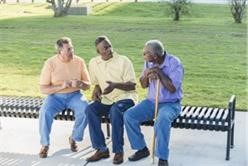Canadian’s are known for being nice. Using ‘Please’ and ‘Sorry’ is core to our vernacular. An important part of Intercultural Competence is an understanding and reflection on your own culture – and for the majority of Algonquin’s employees that means Canadian. Want an insider/outsider perspective? Check out the overview of Canadian culture provided by Global Affairs Canada. But this cultural identity of being nice and polite doesn’t mean we are warm and open to strangers, which may come as a surprise to many Canadians. And when we think about what this means in relation to inclusion and belonging, being nice and polite just doesn’t suffice.
Earlier this fall I read an op ed in the Toronto Star on just this subject ‘Canadians are nice and polite. Maybe that’s why it’s so hard to make friends here’. The author is a International student from China, speaking about his experiences integrating into Canadian life. “Soon I learned that in Canada, smiles and cordiality — often masking indifference and distance — are no recipe for forging meaningful connections. Sometimes, they can be an obstacle.” This article brought back an experience I had earlier in my career when a colleague dropped off a bossa nova CD that I had admired at her desk. I was a bit confused as to why she was giving this to me. In our conversation it was revealed that she was moving back to Brazil. I’ll never forget what she told me when I asked why. She said “I’ve been here over a year now and you are all very nice but I don’t have any friends. We have never once been asked by anyone to come over to enjoy a meal.”
This experience of loneliness is also alive and well on our bustling campuses. The Manager of International Student Integration presented on ‘The Secret Life of International Students’ during the PD on Intercultural Competence. [register here for the February 2020 workshop if you missed it!] Anna Choudhury dispelled the myth that international students settle in well to Canada because we are so diverse. The number one challenge that international students (in Canada, the US, Australia and the UK) identify is not being able to make local friends. Group work also ranks high on the list. These two things are actually related, as international students struggle with group work and making friends with Canadians due to different sociocultural norms: how social groups interact, how authority is divided or assigned, having sociocultural ‘currency’ – so shared experiences with Canadians students, the music, movies, tv shows, figures of speech, jokes based on knowledge of local and national identity and current or historical events.
So what? Well, recognizing the experiences of New Canadians, new colleagues and international students is an invitation to find ways to build connections to others that goes deeper than politeness. Reach out, check-in, invite that new colleague over for dinner; refer that domestic student to the International Student Centre to mentor a international student – friendships and belonging are good for all of us.




